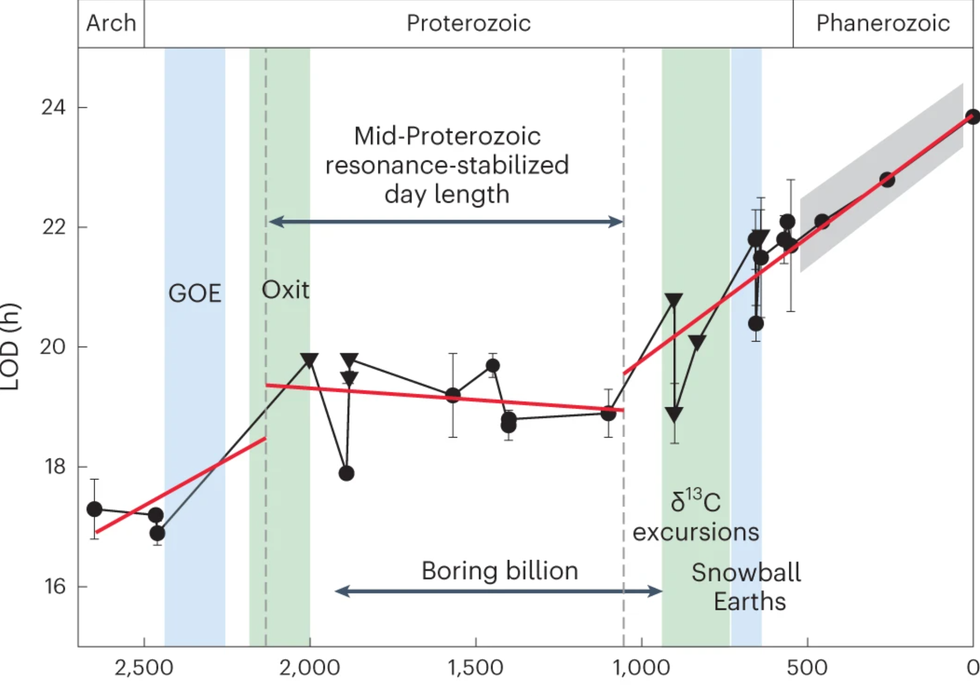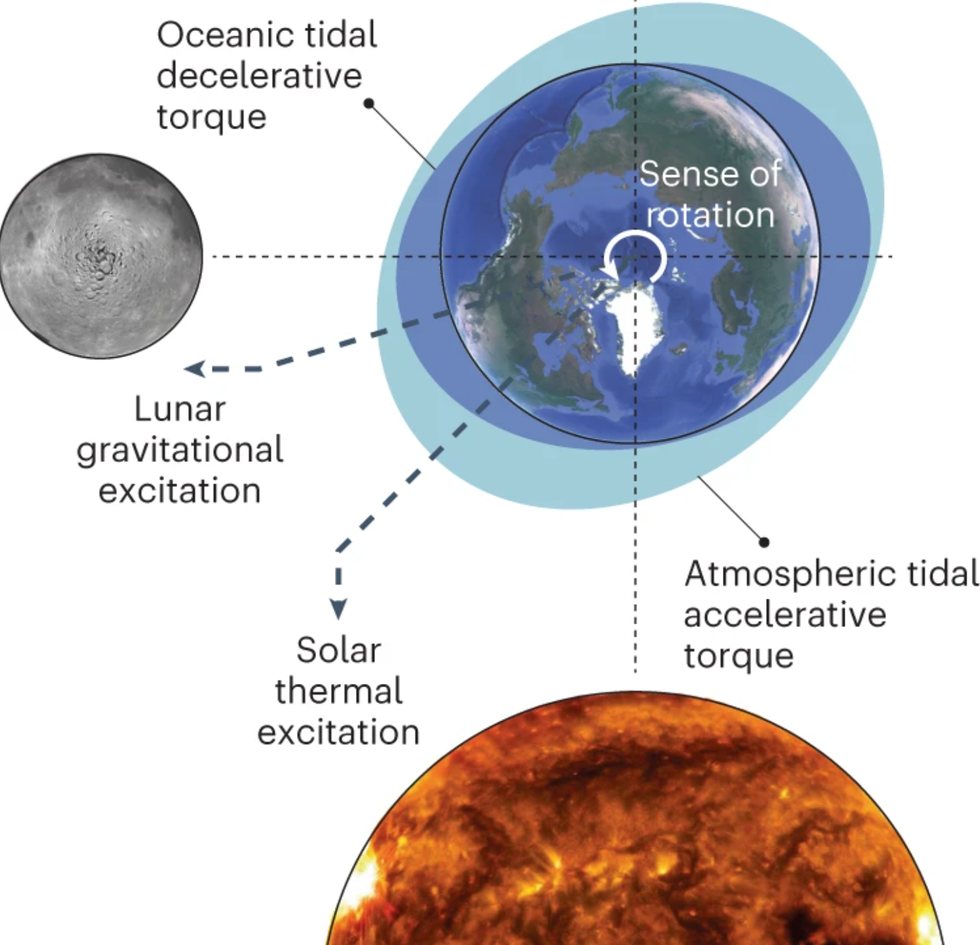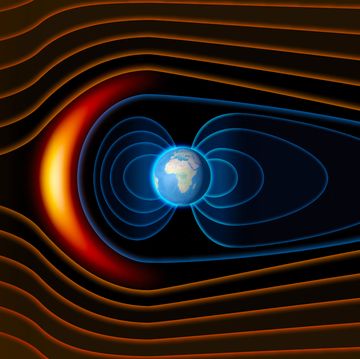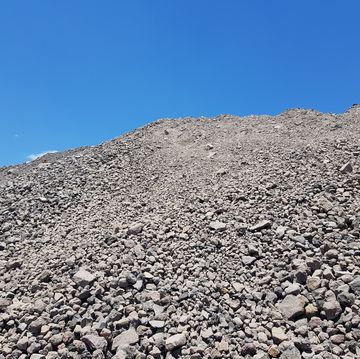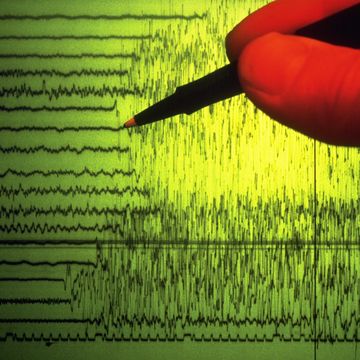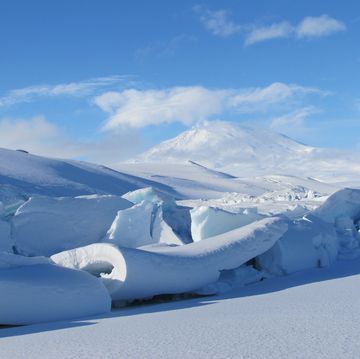- While it’s difficult to get everything done that needs doing in a 24-hour-long day, at least you didn’t live during the Proterozoic, when days were only 19 hours long.
- Since its formation, the Moon and its decelerative torque have slowly been making Earth’s days longer. But evidence suggests that, for about a billion years, the length of Earth’s days stayed roughly the same.
- A new paper theorizes that atmospheric fluctuations on Earth might’ve given solar tides enough influence to balance out the Moon’s forces.
Today, the planet spins at a comfortable 24 hours a day. But that’s a surprisingly new phenomenon, geologically speaking. During the Mesozoic Era (252 to 66 million years ago), the world spun on its axis once every 23 hours. Turn the clock back 1.4 billion years ago—a cool billion years before life on Earth really took off—and a day was only 18 hours and 41 minutes long.
The Earth’s rotation is impacted most by Earth’s only natural satellite, the Moon, which formed during the fiery days of the Hadean Eon. As the Moon formed—likely from the debris of Earth’s collision with an ancient planet named Theia—it was only 14,000 miles away. That’s 17 times closer than it is today, and this closeness caused the Earth to spin more rapidly.
But since those early days, the Moon has slowly created some distance from its host planet. So, that means Earth’s days have only been getting longer and longer, right? If only it was that easy.
For decades, some scientists have theorized that, for about a billion years (between 2 billion and 1 billion years ago), the length of an Earth day actually stayed put at around 19 hours, flouting the assumption that Earth days only increased in length as the Moon moved toward its modern orbit. This long stretch of time, smack dab in the middle of the Proterozoic era, is known affectionately to scientists as the “boring billion” because not much happened on Earth (relatively speaking).
Now, scientists from the Chinese Academy of Sciences and Australia’s Curtin University say they’ve figured out why the Earth pressed pause on its daily length. Using newly gathered data—especially via cyclostratigraphy, where researchers us patterns in sediment to study climate cycles forced into being by astronomical events—and performing a statistical analysis, the scientists discovered that fluctuations in the Earth’s atmosphere at the time provided enough opposing forces to counteract any day length changes created by the Moon’s gravitational influence. The results were published on Monday in the journal Nature Geoscience.
“Because of this, if in the past these two opposite forces were to have become been equal to each other, such a tidal resonance would have caused Earth’s day length to stop changing and to have remained constant for some time,” co-author and Curtin University’s Uwe Kirscher said in a press release.
The beginning of this pause coincides with what’s known as the Great Oxidation Event, where the Earth temporarily saw a rise in oxygen levels and the creation of an ozone layer before levels dropped off again. This change in the atmosphere could have increased the effect of solar atmospheric tides that then offset the Moon’s influence.
It’s possible that this pause delayed the cementing of life on Earth, as the early photosynthetic bacteria might’ve required longer days to achieve adequate to produce enough oxygen to support more complex life.
Today, the Earth is thoroughly unstuck and days are getting longer—albeit at mind-numbingly slow rates. Scientists estimate that days currently lengthen 0.000015 seconds per year. To put that into perspective, an Earth day has only gained about 0.047 seconds since the collapse of the Bronze Age around 1,200 BCE.
You won’t have to swap out your clocks anytime soon.
Darren lives in Portland, has a cat, and writes/edits about sci-fi and how our world works. You can find his previous stuff at Gizmodo and Paste if you look hard enough.

